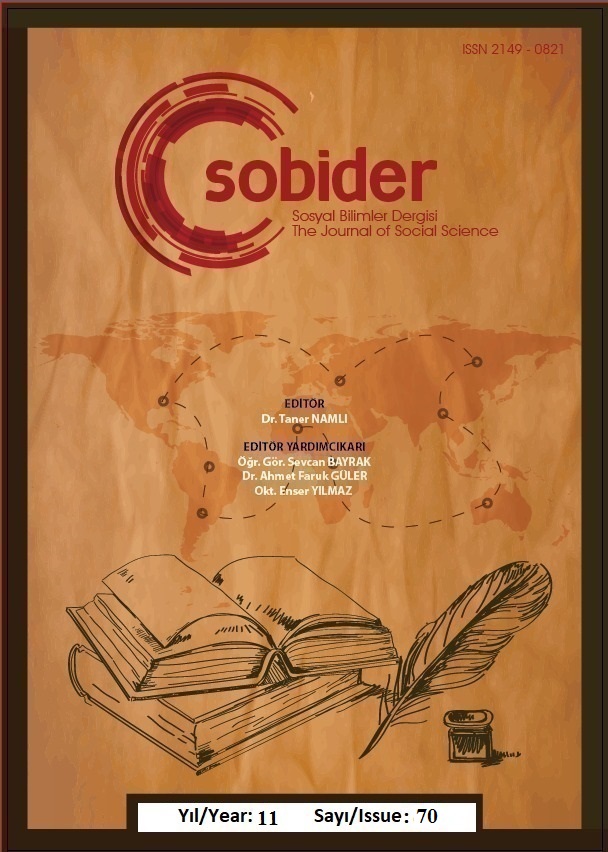ALEXANDER SCRİABİN ’İN OPUS 8/4 NUMARALI ETÜDÜNÜN MÜZİKAL DİL, DOKU VE PERDE ÖZELLİKLERİNİN İNCELENMESİ
Author :
Abstract
Bu makalede, Alexander Scriabin'in nadiren seslendirilen eserlerinden Op. 8 No. 4 Etüdünün melodi, akor ve poliritmini incelemeyi ve özellikleriyle ilgili teorik ve metodik konuları ele almayı amaçlamaktadır. Eserin ana biçimlendirici faktörü sıralı gelişim ilkesidir. En önemli doku özelliği de gizli çokseslilik ve taklittidir. Scriabin dominant alanını çok sayıda geciktirmelerle değişiklik yaparak gizli dokuzlu akorların kullanımı ile genişletir. Makalede, müzik cümleleri oluştururken her iki eldeki motiflerin organizasyonuyla ayrılmaz bir şekilde bağlantılı olan karmaşık poliritmiklerin çalışılmasına yönelik metodolojik bir yaklaşım önermektedir. Motif organizasyonunun varyantlarının seçimi icracıların tercihlerine ve bireysel özelliklerine göre değişiklik eserlerin prototipleri olarak kabul edilebileceği de gösterilmiştir. Bu bağlamda, yaratıcılığın erken dönemine ait eserlerin icrasına, daha sonraki dönemde ortaya çıkan piyanistik tekniklerin prizmasından bakmak mantıklıdır.
Keywords
Abstract
The article is aimed at considering theoretical and methodical issues related to the peculiarities of studying the melody, chords, and polyrhythm of Alexander Scriabin's rarely performed Fourth Etude Op. 8. The main form-forming factor of the piece is the principle of sequential development. An important feature of the etude's texture is its latent polyphony and imitation. Scriabin expands the dominant sphere with the help of numerous delays, alterations and the use of hidden ninth chords. The paper proposes a methodical approach to the study of complex polyrhythms, which is inextricably linked to the organization of motives in both hands when constructing musical phrases. In this case, the choice of variants of motive organization depends on the preferences and individual characteristics of the performer. It is shown that from the point of view of the musical language of the etude, some of its elements can be considered as prototypes of later works. In this connection, it is logical to look at the performance of works of the early period of creativity through the prism of pianistic techniques that appeared in the later period.





